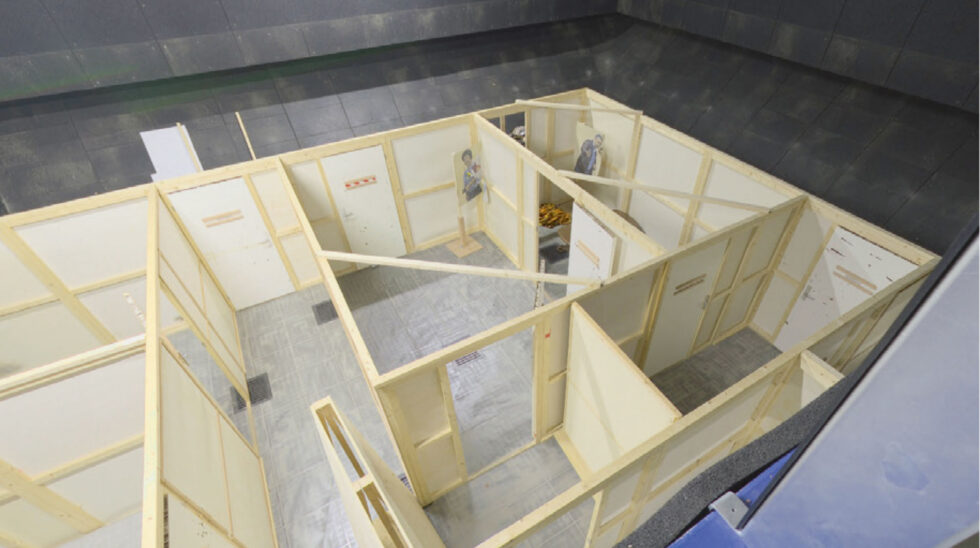
Lessen uit schietongeval Ossendrecht
On 22 March 2016 the Royal Dutch Army's Commando Corps (Korps Commandotroepen - KCT) was exercising on a firing range at the Police Academy in Ossendrecht. During the exercise the trainees used live ammunition and a trainee instructeur was hit several times and died. Despite the existence of a safety management system, the Ministry of Defence senior management failed at multiple levels to manage the safety of its own personnel in a professional way. Multiple safety-critical barriers failed or did not function properly.
Summary
It is in the nature of the military profession that personnel are sometimes exposed to major risks, which can literally involve life and death. These risks are evident during operational deployment, but are also present during exercises. After all, in order to be able to perform the activities during operational deployment, with the desired results, and as safely as possible, exercises are conducted under realistic conditions.
The Dutch Safety Board recognises the need to exercise as realistically as possible in order to be prepared for deployment. To that extend however, the risks for all participants in both deployment and exercise must be identified in advance, and the correct precautions must be taken so that participants’ safety can be guaranteed as much as possible. To exercise safely, participants must be able to make mistakes without these mistakes leading to fatal consequences.
During a live firing exercise in Ossendrecht, despite the fact that all sorts of safety procedures existed on paper, one participant was deadly wounded. The Safety Board’s investigation into the accident has shown that various safety barriers did not function. This resulted in an exercise situation in which an exercise, which was not conducted flawlessly, had a fatal outcome. The shortcomings were present within the procedures and regulations for the exercise location, the qualifications of the instructors, the development of the counterterrorism training programme, and the choice to use a high risk shooting house for a complex exercise.
The Commando Corps (Korps Commandotroepen) is a small close-knit unit within which a strong group cohesion exists and where a solution-oriented approach is part of every day life. A high degree of autonomy and responsibility is given to subordinate units. This is very important during operational deployment, since these units are often deployed independently without direct supervision by senior management during missions at the highest end of the combat spectrum. Because of the nature of the activities, the high degree of autonomy and the solution driven approach demand that senior management of the defence organisation takes responsibility for ensuring that the tasks can be performed as safely as possible. Senior management must thereby intervene when the safe execution of the tasks cannot be guaranteed. This relates to both operational tasks during deployment and the preparation for these tasks in the form of exercises.
It follows from the investigation into the shooting incident in Ossendrecht that, despite the many regulations that are in place to guarantee safe working, multiple safety-critical barriers failed or did not function properly. The Safety Board notes that the link between the regulations and the safety philosophy behind them was missing in the run-up to the fatal incident in Ossendrecht. This manifested itself in - amongst other things - a lack of urgency about creating an environment in which exercises can be carried out safely, such as allowing gaps in safety-critical regulations, failing to act on reports about shortcomings, and the fact that at the time of writing the construction of the Army’s own shooting house has not yet started, despite the fact that the need for this shooting house had already been established internally in 2007. The Defence emphasis remained on the exercises going ahead and the timely training of personnel, without thinking about the consequences of this accumulation of shortcomings. The Safety Board acknowledges that the Ministry of Defence has undergone major reorganisations in recent years, which have made demands on the organisation. However, this cannot serve as an excuse to settle for less when it comes to the safety of the personnel.
Aanbevelingen
The Safety Board is concerned about the degree to which the incident in Ossendrecht is symptomatic of the existing safety culture within parts of the defence organisation, and makes the following recommendations:
To the Minister of Defence:
- Urgently action the construction of the Army’s own shooting house in accordance with the requirements identified in 2007 and subject to the necessary safety requirements, within which dynamic firing exercises can be carried out safely;
- Take urgent steps to remove the gaps in safety-critical regulations and the shortcomings in the implementation of these regulations, as identified in this investigation;
- Examine the extent to which the failure of multiple safety-critical barriers in the shooting incident in question is indicative of the safety culture within the broader Ministry of Defence. Thereby pay specific attention to the extent to which safety awareness is safeguarded at all levels within the Ministry of Defence.
